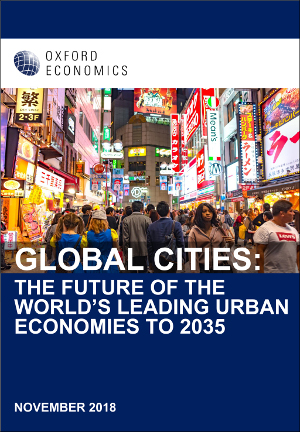Ungated Post | 21 Nov 2018
Global Cities: The future of the world’s leading urban economies to 2035

The world is ever more urban. The top 780 global cities already produce almost 60 per cent of all world economic activity, and they are set grow in importance as urbanisation continues. In our latest annual Global Cities report, we forecast significant growth disparities between cities around the globe over the coming decades to 2035 and predict far-reaching changes in the world’s urban order, with the balance of urban economic power shifting further east as a result.
Subscribers to our Global Cities service can find the full report here
Related Services

Post
KPMG M&A Outlook 2026: Between Uncertainty, Resilience, and Seizing Opportunities
Discover how Germany’s M&A landscape is evolving – with a focus on growth, AI and post-merger value creation.
Find Out More
Post
Silver, the next generation metal
This report highlights the critical role silver plays in data centres and artificial intelligence (AI), automotive and electric vehicles (EVs), and solar energy photovoltaics (PVs). With these sectors expected to expand significantly over the coming years, we expect future silver demand to be strong.
Find Out More
Post
Powering the UK Data Boom: The Nuclear Solution to the UK’s Data Centre Energy Crunch
The UK’s data centre sector is expanding rapidly as digitalisation, cloud computing, and artificial intelligence (AI) drive surging demand for high-performance computing infrastructure.
Find Out More